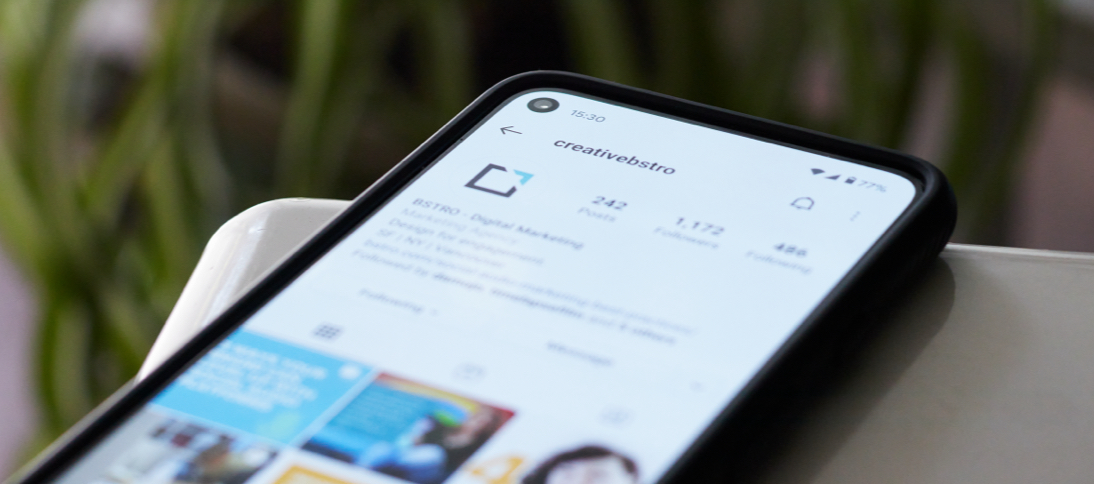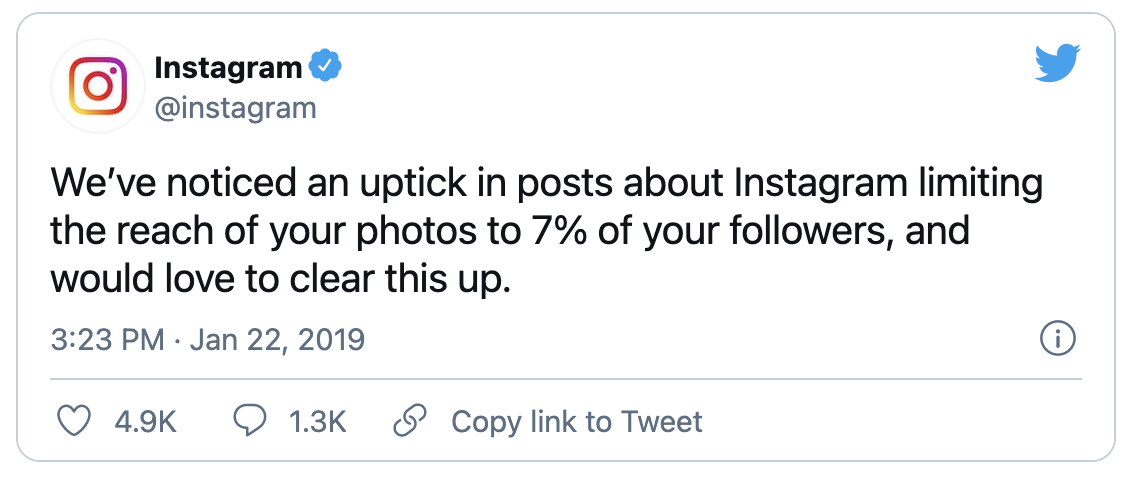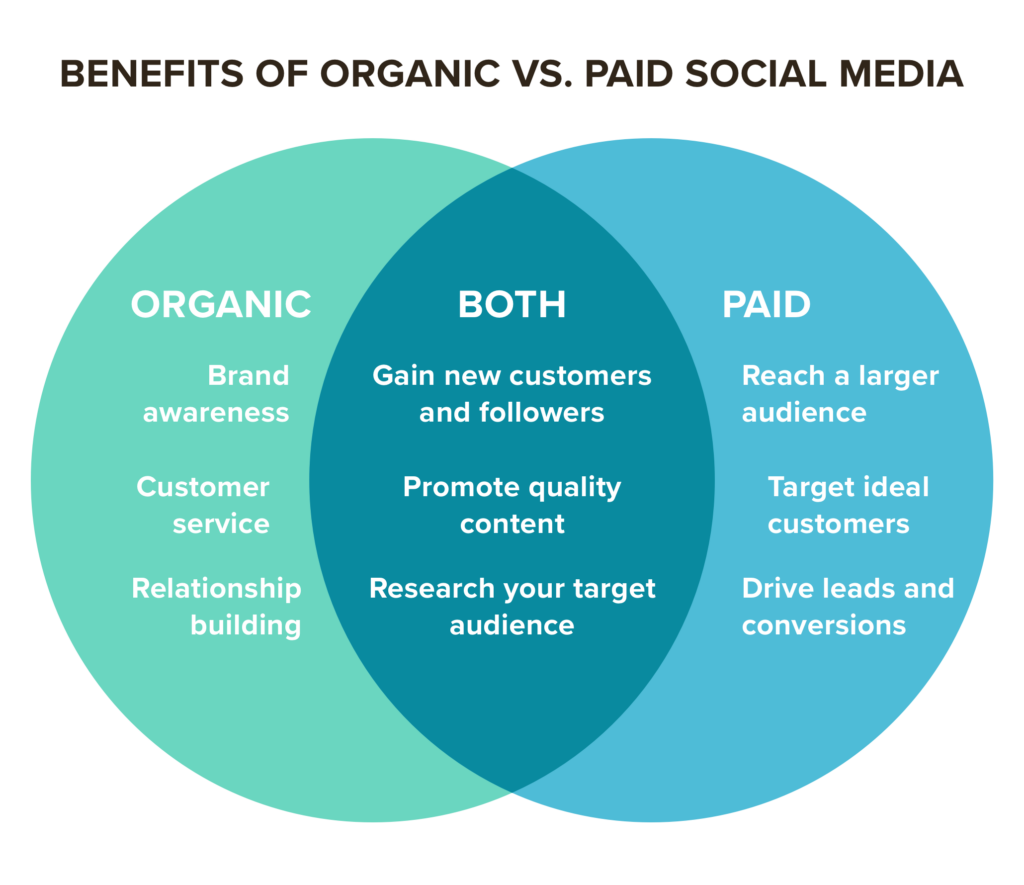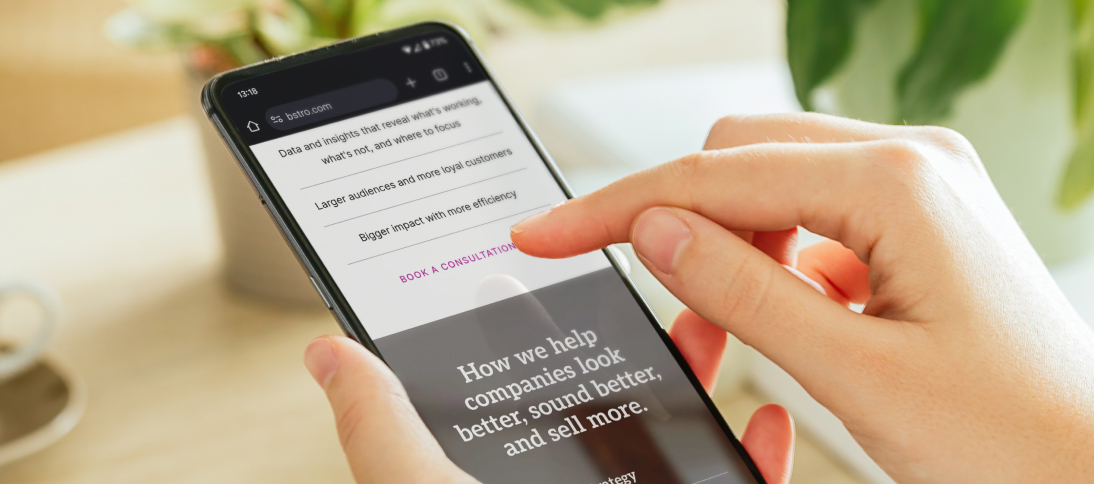In this article
In 2020, there were a whopping 3.96 billion users active on social media. At the moment, over half of those people use their socials to research the products they’re interested in. People are increasingly using social media to stay in touch, not only with their friends and loved ones but also with brands. A 2020 survey showed that 36% of Instagram users in the States used the platform to follow brands or companies, with Twitter coming in close at 33%. Your social channels are an opportunity for your brand to tell your story and stay connected with the people who keep your business going.
What is organic social media?
Organic social media is any free content you post or reshare to your audience via your social media channels. Organic posts can be related to the products you’re selling and reveal your “why.” Organic social is a great platform to show what your company aligns itself with in terms of humor, social causes, physical aesthetics, and philosophy.
The investment in organic social media is simply the time and effort to create and push out the content. Social media started as a channel to connect friends and share slices of life. Brands jumping into social platforms should use them with their original intent in mind. The main aim of organic content isn’t overt promotion; it’s sharing who you are and your life updates. Social platforms let people and brands show off all the interesting and mundane facets of themselves so that people know you better. In doing so, organic is a great channel to raise brand awareness.
How can organic social media benefit your business?
Social media is one of the first and most direct touchpoints you have with a consumer. 58% of people visit a brand’s social media pages before visiting their website. If your social media makes a solid first impression, you may gain a customer.
Establish your brand personality
Social media is a chance to show off who you are and leave an impression on those who contact your profile. The quality of your posts can encourage more engaged actions like leaving a comment or sharing the content with a friend. You can establish your brand personality by posting content that shows users what you care about and adding a little humor into the mix. Organic social is often an opportunity to keep things casual and relatable. Writing your copy in a platform-friendly tone can make you more approachable to consumers. Style and voice do vary from platform to platform—take Twitter, for example.
Highlight what your brand stands for
Organic social provides a platform for you to share the why of your brand. Do you value social impact? Let people know! 86% of consumers believe that companies should take a stand for societal issues. This doesn’t mean that you have to make a post for every cause of the day—56% of consumers say that too many brands use societal issues as a marketing ploy. But being transparent and vocal about the values that drive your brand can also drive interest and trust in your business.
Build a loyal community of engaged followers
90% of consumers say that authenticity is important when deciding which brands they like and support. Organic social media is a chance for you to find your people authentically! Post content that aligns with your brand. If what you post is inconsistent with who you are, your audience will be unlikely to follow through on a call to action.
Find your groove and start posting content that resonates with your audience, and they will be more likely to interact with your profile. The more they engage, the more your content will continue to appear on their homepage. Suppose followers end up purchasing your product and posting about it. In that case, this user-generated content ends up being an invaluable customer testimonial that you didn’t have to spend a penny on. 79% of people say that user-generated content on social media significantly impacts their purchasing decisions. It’s a positive feedback loop that can do wonders for your brand and social media growth, and it all starts with grabbing the attention (of the right people!) with your organic posts.
“When people see a large community following a brand and interesting comments on posts, they’re more inclined to follow along themselves. From the high-quality, engaged audience, you can create look-alikes, which lead to better ad targeting and more efficient media spends. What you can learn from organic can be so valuable. We’ve received product feedback, reviews and found out what questions people have.”
— Talia, BSTRO Digital Marketing Director
Promote your product.
Using organic social media to promote products is not as in your face and, with the right direction, can feel more like the nudge of a friend. Giveaways and contests can engage users in sharing your content and are cost-effective—contest CTAs have a 3.73% higher conversion rate than other CTAs. Promo codes or early-bird sale announcements can also establish your socials as a go-to for special deals. Use branded hashtags to make your product or campaign memorable and so all related posts can be easily accessed.
Keep up with the algorithm.
Social media algorithms have been a topic of debate since their inception. Algorithms generally use relevance instead of time to sort the order of organic content in their timelines and newsfeeds. These factors include relevance, timeliness, and the relationship one has with the account. Algorithms prioritize posts with a high probability of engagement, particularly those using rich or diverse media such as videos, images, and GIFs.
“Organic social isn’t just great for your audience; it’s great for your growth of social media as well. Regularly creating content that people will want to like, save, and share encourages loyal followers, but it helps the algorithm favor you.”
— Katrina, BSTRO Creative Strategist
How do we measure the value of organic social media content?
Set relevant metrics
The answer is pretty simple: set your KPIs and SMART goals. Many factors and metrics can affect how your content is both posted and received, so it’s crucial to know what metrics to look for going in. Social media is already pretty hard to navigate in itself! With a clear goal as to what you want your social to do and how you want to measure the success of your posts, you can continue honing and refining the value you take out of your organic content. One metric isn’t enough to inform the bigger picture. Though a brand may have many followers, low engagement may mean that its content falls on deaf ears. Likes have little effect if your CTAs are ignored. Similarly, impressions won’t mean much if users scroll past your content without actively taking it in.
Use your vanity metrics the right way.
Believe it or not, vanity metrics aren’t all bad! Metrics such as likes, comments, and retweets from humans are still concrete proof that people interact with you. And if you can find a relationship between social media engagement and website conversions or sales, you can better inform your business as a whole. It would help if you saw how each aspect plays into the bigger picture. Cue the SMART goals!
Why does organic social media matter to your audience?
Meet your audience where they are
For starters, it’s crucial to meet your audience where they are. If you’re reaching out in places that your consumers don’t frequent, it’s a waste of time and resources, and your audience will simply flock to your competitors who are showing up. Organic social media is also becoming somewhat of an expectation, as solid proof that you’re up to date, keeping up with current trends, and putting in the effort.
“If you’re not active online, you’re missing the opportunity to be part of people’s daily routines. People check their social feeds religiously. Organic social is a great way to stay top-of-mind and get a little bit of your story in front of a primed audience every day—sometimes multiple times a day—without having to invest media dollars doing so.”
— Jill Tracy, BSTRO CEO/CCO
Make your audience feel heard.
One of the most powerful things about social media marketing is the ability of your audience to communicate with you and voice their opinions directly. With the tap of a button, a user can ask a question or leave a review that reaches your business directly. Expectations are higher for communication to be reciprocal, as not addressing a complaint can decrease customer advocacy by 50%. As such, a little goes a long way in showing that you are listening and responding to your customers’ needs. Not only will they feel more valued (as they should be!), but you’re satisfying the people who uplift your brand while obtaining valuable informal market research along the way. Again, shining the spotlight on user-generated content can show your audience that you’re listening while making it known to fellow followers that their input does not go unnoticed.
Do organic and paid social media go hand in hand?
Paid social can inform organic social content.
One of the biggest pros of paid social media is the boost in visibility. Seeing what ads people respond to can also inform what kind of organic content you should be posting. What’s clear is that they’re both essential parts of the same puzzle—52% of all online brand discovery still happens in public social feeds, both paid and organic.
Prepare to respond with organic social after investing in paid.
After boosting a post or putting out a sponsored ad, be prepared to keep following through with organic content. Followers may click through to your profile and see what non-sponsored posts you have to offer. Once they reach your profile, your organic posts take center stage.
“If there is no noticeable uptick in follower growth and you’re running ads designed for the platform on the platform, something is wrong. Suppose you’re running ads on social media and care about impressions but don’t care about on-platform results like link clicks or follower growth, or anything else. How will you know if your ads are actually engaging, and people aren’t just brushing over them and forgetting they ever saw it, like most bad ads? Following you is just one of the actions a user can take when they see your ad. If they aren’t following, it’s not a problem in isolation, but again, with a full view of the matter, it’s an indicator of whether your ads are engaging or not.”
— Ryan, BSTRO Creative Strategist
In summary,
Fostering meaningful connections online can be difficult, especially when, as a brand, consumers know you’re ultimately there to sell them something. But brand building isn’t transactional. Every company and brand started for a reason. People care about the backstories, values, and purpose behind the brands they embrace. Telling your story is where organic social media can come in handy. Organic social is a valuable way to communicate more than what can be read on a label or included in a 30-second ad spot. Provide value for the sake of genuinely wanting to better the lives of your audience, and you’ll likely reap the rewards of a loyal audience that knows your company and chooses to bring you into their lives.

 “When people see a large community following a brand and interesting comments on posts, they’re more inclined to follow along themselves. From the high-quality, engaged audience, you can create look-alikes, which lead to better ad targeting and more efficient media spends. What you can learn from organic can be so valuable. We’ve received product feedback, reviews and found out what questions people have.”
“When people see a large community following a brand and interesting comments on posts, they’re more inclined to follow along themselves. From the high-quality, engaged audience, you can create look-alikes, which lead to better ad targeting and more efficient media spends. What you can learn from organic can be so valuable. We’ve received product feedback, reviews and found out what questions people have.”
 “Organic social isn’t just great for your audience; it’s great for your growth of social media as well. Regularly creating content that people will want to like, save, and share encourages loyal followers, but it helps the algorithm favor you.”
“Organic social isn’t just great for your audience; it’s great for your growth of social media as well. Regularly creating content that people will want to like, save, and share encourages loyal followers, but it helps the algorithm favor you.” “If you’re not active online, you’re missing the opportunity to be part of people’s daily routines. People check their social feeds religiously. Organic social is a great way to stay top-of-mind and get a little bit of your story in front of a primed audience every day—sometimes multiple times a day—without having to invest media dollars doing so.”
“If you’re not active online, you’re missing the opportunity to be part of people’s daily routines. People check their social feeds religiously. Organic social is a great way to stay top-of-mind and get a little bit of your story in front of a primed audience every day—sometimes multiple times a day—without having to invest media dollars doing so.”
 “If there is no noticeable uptick in follower growth and you’re running ads designed for the platform on the platform, something is wrong. Suppose you’re running ads on social media and care about impressions but don’t care about on-platform results like link clicks or follower growth, or anything else. How will you know if your ads are actually engaging, and people aren’t just brushing over them and forgetting they ever saw it, like most bad ads? Following you is just one of the actions a user can take when they see your ad. If they aren’t following, it’s not a problem in isolation, but again, with a full view of the matter, it’s an indicator of whether your ads are engaging or not.”
“If there is no noticeable uptick in follower growth and you’re running ads designed for the platform on the platform, something is wrong. Suppose you’re running ads on social media and care about impressions but don’t care about on-platform results like link clicks or follower growth, or anything else. How will you know if your ads are actually engaging, and people aren’t just brushing over them and forgetting they ever saw it, like most bad ads? Following you is just one of the actions a user can take when they see your ad. If they aren’t following, it’s not a problem in isolation, but again, with a full view of the matter, it’s an indicator of whether your ads are engaging or not.”

